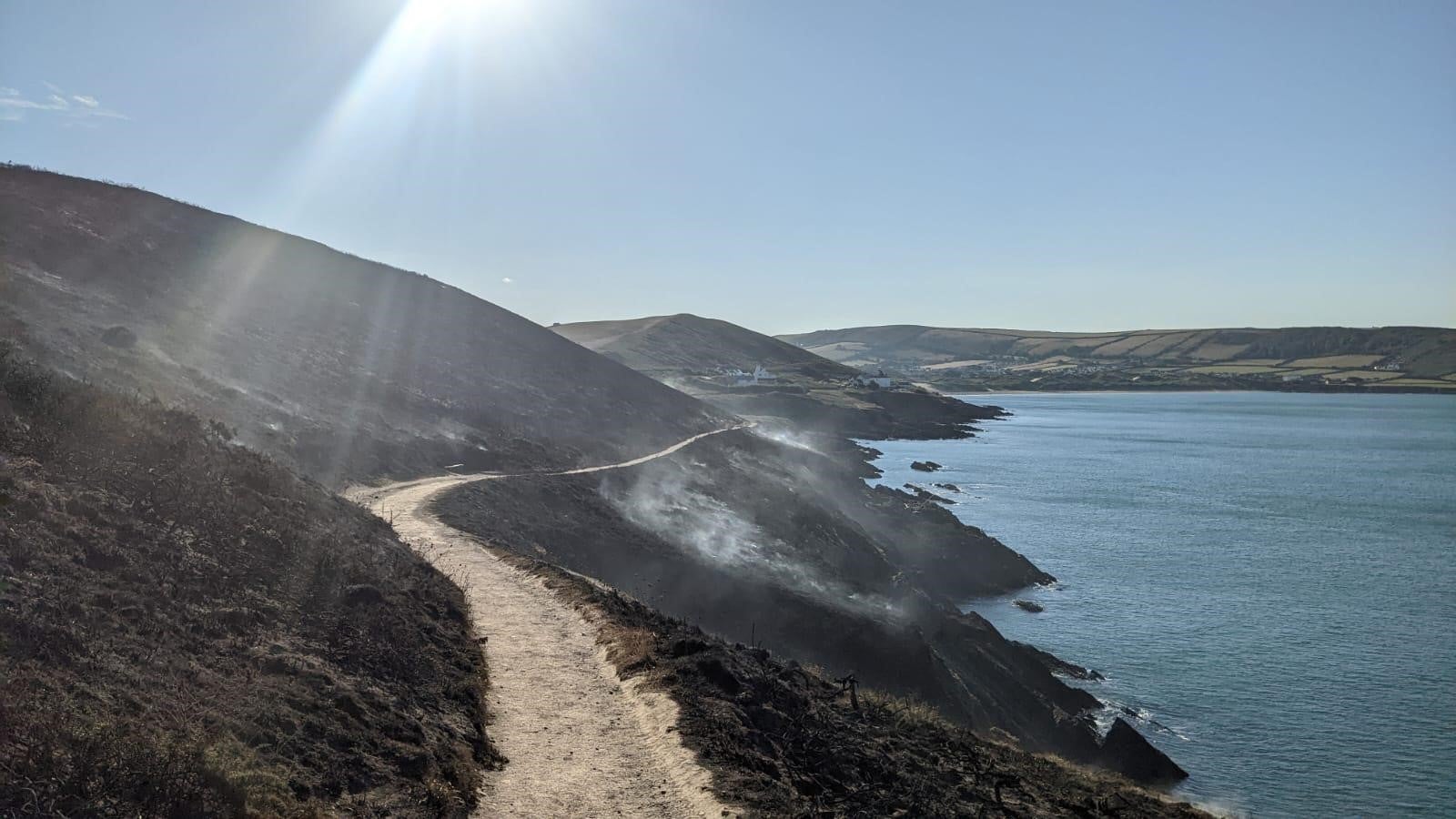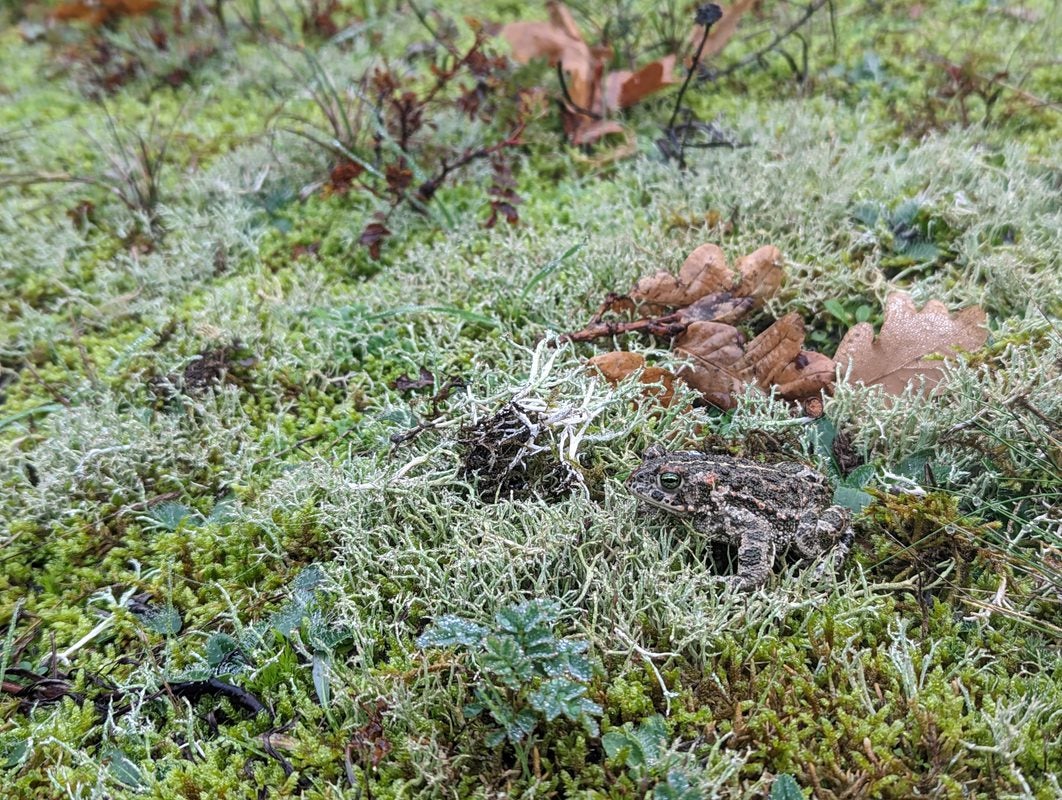Extreme weather of 2022 destroyed habitats, disrupted breeding – but it’s just the start, experts warn
The National Trust warns extreme weather in 2022 sets a benchmark for what a typical year of weather could be like as global heating progresses
Your support helps us to tell the story
From reproductive rights to climate change to Big Tech, The Independent is on the ground when the story is developing. Whether it's investigating the financials of Elon Musk's pro-Trump PAC or producing our latest documentary, 'The A Word', which shines a light on the American women fighting for reproductive rights, we know how important it is to parse out the facts from the messaging.
At such a critical moment in US history, we need reporters on the ground. Your donation allows us to keep sending journalists to speak to both sides of the story.
The Independent is trusted by Americans across the entire political spectrum. And unlike many other quality news outlets, we choose not to lock Americans out of our reporting and analysis with paywalls. We believe quality journalism should be available to everyone, paid for by those who can afford it.
Your support makes all the difference.Ferocious wildfires, record-breaking temperatures and a devastating drought destroyed habitats and disrupted the breeding of rare animals this year – a pattern set to be repeated, the National Trust has warned.
“Tumultuous” weather, including tree-toppling storms, floods, an unusually warm January and freezing temperatures in December challenged wildlife and nature as it destroyed crops, disorientated animals, and reduced the number of bees and butterflies, the conservation group said.
The charity warned that the extreme weather endured in 2022 sets a benchmark for what a typical year for weather could be like if the climate and nature crises are not addressed.

“It is a stark illustration of the sort of difficulties many of our species will face if we don’t do more to mitigate rising temperatures and help nature’s survival,” said Keith Jones, climate change adviser at the National Trust. “But the ‘new normal’ is also likely to result in even more extreme weather events than now.”
Last week, almost 200 countries reached a landmark deal to protect nature, pledging to safeguard 30 per cent of the world’s land and oceans by 2030.
But climate experts predict that the UK will see more short, sharp downpours, along with dry and hot summers and warmer but wetter winters. It comes after parts of England topped 40C for the first time on record this summer. The top 10 warmest years in the UK since 1884 have all been recorded this century.
Other parts of the world have suffered even more extreme weather. Approximately a third of Pakistan was left under water earlier this year after the country was hit by climate-fuelled flooding, killing well over 1,000 people and affecting 33 million more. Australia and South Africa were also hit by flooding, and much of Europe was affected by devastating wildfires and high temperatures.
Back in the UK, many ecosystems struggled to adapt to the changing weather. Wildfires on National Trust land destroyed the homes of the silver blue butterfly, rare sand lizards and smooth snakes, while rain and storms washed away nests of tern colonies, as well as soils that will struggle to regenerate.
The drought, which is still affecting much of the country, disrupted the breeding of species such as the natterjack toad as well as butterflies and birds, and disorientated others including bats, the National Trust said. Pollinators were also badly hit as flowers withered and died.
And the heat stunted the growth of crops, dried up the grass grazed by livestock, and contributed to a “false” autumn, where tree leaves dropped earlier than usual. At the same time, bird flu hit seabirds hard.
The much-loved puffin is one of the starkest examples of species at risk of extinction, according to bird charity the RSPB. Chicks in former puffin strongholds are now more at risk of starving, because warming seas are causing a reduction in the number of sand eels, on which they feed.
The RSPB’s red list of “birds of most concern” has 70 species on it – double the number in its first report in 1996. Swifts, house martins and Montagu’s harriers are also on the list because of a decline in their populations and in the areas they use for breeding.
Henry Hakkinen, an expert on seabirds and climate change, said:“There was a massive heatwave in Antarctica this year during the breeding season (around last January), which caused total breeding failure in a lot of seabirds in the southern hemisphere.
“In previous years, heatwaves have caused widespread mortality and breeding failures in seabirds, either through heat stress or causing prey to flee from colonies into cooler water.”
Ali Morse, a water expert at The Wildlife Trusts, told The Independent that some of the worst effects of the drought had been on rivers, where water levels had not recovered quickly enough but torrential rain following the summer drought had carried pollutants such as brick dust, heavy metals, tyre fragments and pesticide residues into waterways.
The lower water level is likely to hit fish populations next year, and can also make any chemicals in the water more concentrated, meaning they are more deadly for insects, she said. It also means that birds such as kingfishers and herons that normally feed on fish will have less to eat.
“With vegetation, winter flowers and berries dying off earlier than normal, small mammals that hibernate might not have built up enough stores to survive the winter, so next year we might find populations have died off.
“We need to be much cleverer in managing water resources,” added Ms Morse. She called for water firms to tackle leakage, roll out water meters more widely, create more on-farm reservoirs, and support the recreation of UK wetlands, 90 per cent of which have been lost.
Ornithologist and naturalist Philip Lymbery, chief executive of Compassion in World Farming, said it was heartbreaking to see torrential rain destroying birds’ nests and “nature disappearing in front of our eyes”.
“We are one of the most nature-depleted countries, and extreme and unpredictable weather heaps pressure on pressure,” he said. “Thankfully there’s increasing recognition that we’re all in this together, that the web of life is humanity’s life-support system, and through that will come solutions to a more nature-friendly way of living.
“The government can do it if it wants, but I’m not confident yet that we’ve pushed governments hard enough into taking the action that’s so desperately needed.”
The RSPB said mild winters meant more competition for food among animals that would otherwise be hibernating. “The UK is in a nature and climate emergency, and evidence shows us that the biggest threats to our birds are changes in climate, land use and agricultural practices,” a spokesperson said.
“We must urgently see more ambition from the governments of the UK in tackling both climate change and restoring nature together.”
The government has said it wants reservoir capacity to be increased, and earlier this year it published environmental targets, including for halting the decline in wildlife, with a requirement to increase species populations by 10 per cent over 20 years.
This year’s winners and losers
Winners
Apple crops –largely down to the absence of late frosts
Seeds and nuts –potentially due to the stress from extreme heat and drought as trees attempt to ensure their genes survive
Cornish chough – another record-breaking year, with 25 pairs of the birds successfully breeding on National Trust land
Losers
Seabird colonies – Thousands of birds died on the Farne Islands off the coast of Northumberland in June from bird flu
Bats – Young bats were found dehydrated and disorientated by the heat, and numbers declined compared with last year
Natterjack toads – High temperatures dried up breeding grounds. They need shallow pools to lay their spawn, but deep enough so they don’t dry out before tadpoles have grown up
Trees – Drought and hot weather meant many saplings died

But there were some winners from this year’s weather extremes. A lack of frost was good for this year’s apple harvest, and much of the country has seen an abundance of seeds and nuts – although this is thought to be partly down to the stress trees were under due to the drought. A mild and wet autumn has also been good for fungi.
The National Trust said conservation efforts had also shown promising signs of helping ecosystems to cope better with adverse conditions. One such example is a project reintroducing beavers in Somerset to help maintain higher water levels in woodland.
Last week the government set out a £5.3bn five-year plan to improve the quality of England’s waterways over five years, including improvements in water company abstraction and rewarding farmers and landowners for protecting the environment.
A spokesperson for the Department for Environment, Food and Rural Affairs said: “Drought over the summer and an unprecedented bird flu outbreak have both posed significant challenges this year, and we acted quickly to put measures in place to both protect wildlife and support farmers through the dry weather period.
“We are pressing ahead with our environmental land management schemes and will be working closely with farmers, land managers and environmental groups as we look at ways to improve our future farming policy.”



Join our commenting forum
Join thought-provoking conversations, follow other Independent readers and see their replies
Comments